Have you ever been on a trip overseas and found yourself lost and unable to ask for directions? Or maybe you went to visit your foreign relatives and couldn’t keep up with the conversation?
With 2023 being right around the corner, perhaps it’s time to think about your New Year’s resolutions and, at last, commit to that language-learning journey that you keep bailing on.
I get it: learning a new language is tricky, irritating, and sometimes plain tiring. We’ve all been there at one point or another – with a wall full of sticky notes with rules and keywords, countless shows with the original audio and subtitles on, a pile of textbooks, and random literature. Although the process is very rewarding, sometimes we just need a little push to stay on track. But we can all agree that a certain green owl has got a great trick up his... wing?
More info: Twitter
#1
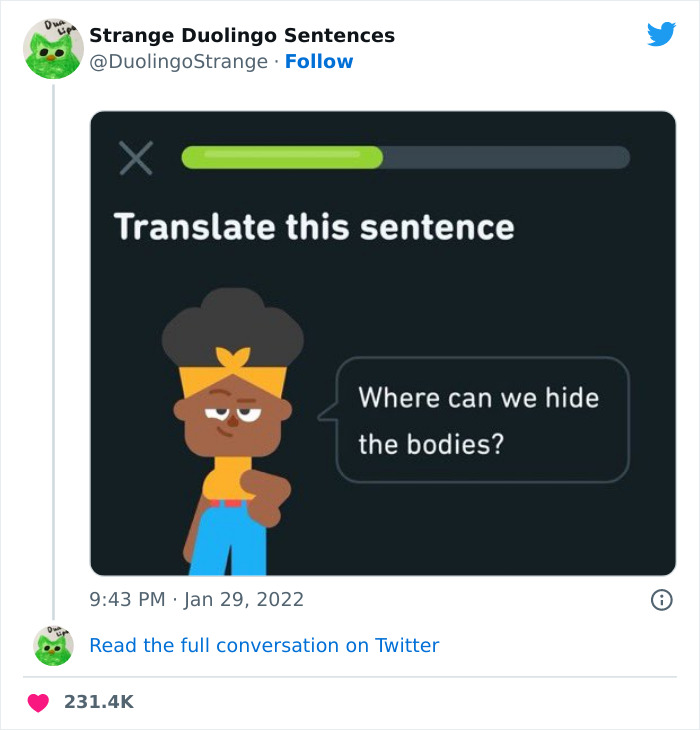
Image credits: DuolingoStrange
The odds are every single one of you wanted to learn a new language at one point or another.
Perhaps you were influenced by a foreign show or music, or maybe you wish to relocate to another country in the near future or to connect with your cultural heritage – whatever the reasoning might be, we all know that it isn’t an easy process.
It challenges your brain and requires your full commitment, and that’s why learning a language usually tends to get more difficult as you become older. For instance, according to this language center, “it takes between 400 and 2200 hours of study, plus a lot of practice to learn a foreign language at a proficiency (C1-C2) level” – but take this number with a pinch of salt, as we’re all different and some folks are simply cognitively better equipped for language learning.
Some will need extra time to grasp the material, whereas others will be ready to flaunt their new vocabulary in 2 to 3 business days – however, no one should give up trying, especially since the activity is very beneficial to all your possible getaways and overall development.
#2
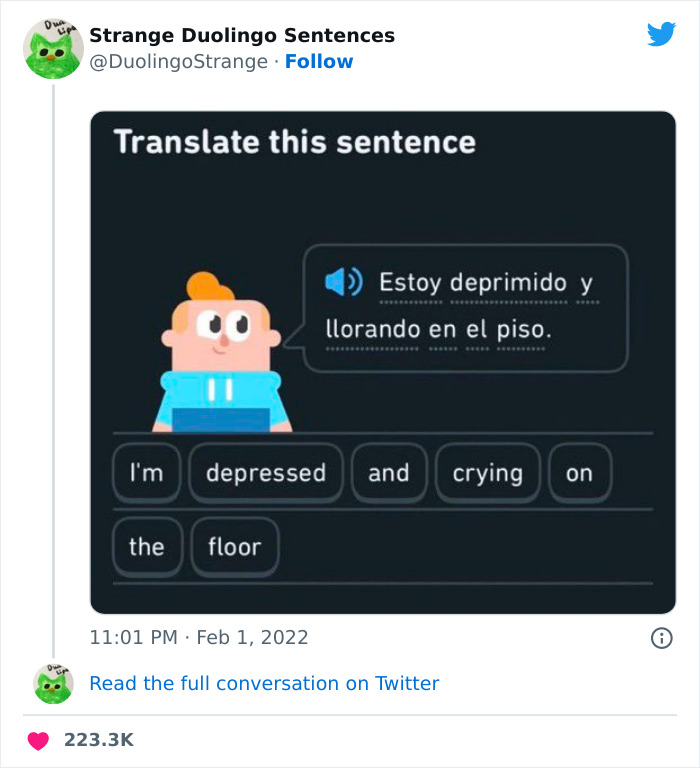
Image credits: DuolingoStrange
Taking evening classes, studying abroad or working overseas, immersing oneself in foreign media, watching shows, using flashcards, and talking to a native speaker – there are a million ways to learn a new language. However, there is a certain approach that is preferred by most: mobile apps.
There is a plethora of applications that can assist you on this exciting journey. Still, throughout the years, in terms of popularity and downloads, Duolingo has managed to take the lead. Currently, the app has over 49 million monthly active users and offers over 100 courses across 40 distinct languages, as well as a small variety of constructed ones like Esperanto, Klingon, High Valyrian, and Mando’a.
It's no secret that the people who work at Duolingo are notorious pranksters. Many of you have already seen a number of meme-worthy videos of the mascot floating around the internet, but the app is also known for its goofy sentences – and as it turns out, these serve a purpose.
“Quirky sentences also have a hidden superpower: they are memorable! They work as a grammatical ‘anchor,’ helping you remember key examples of essential grammar concepts. Right there, hidden in plain sight in sentences about horses, apples, and mothers-in-law, are verb conjugations, word order rules, and vocabulary that can be swapped in and out to make even more sentences than just the silly one you see,” wrote employees on the Duolingo blog.
#3
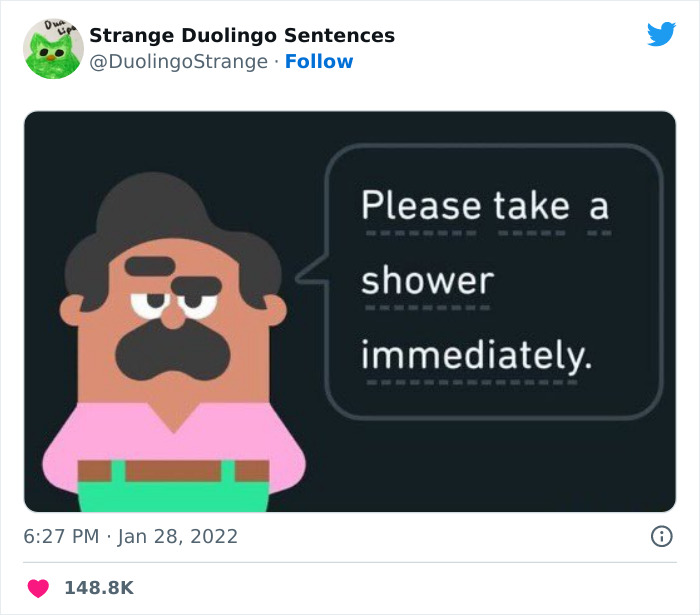
Image credits: DuolingoStrange
#4
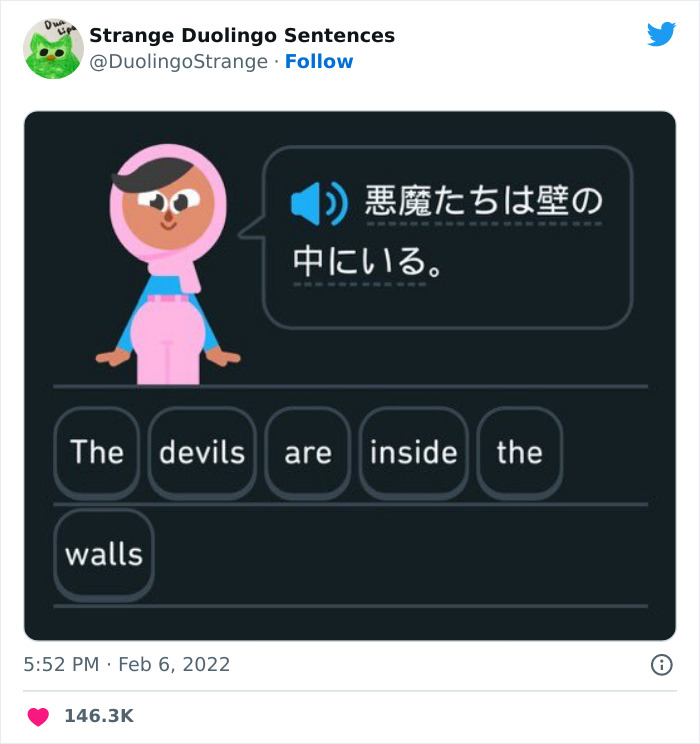
Image credits: DuolingoStrange
To find out more about languages, Bored Panda reached out to Rachel Paling, the founder and director of Efficient Language Coaching, and asked her to introduce herself to our readers: “I’m a polyglot, a neurolanguage coach, a trainer, an entrepreneur, a lawyer, with an MA in human rights, an MA in applied neuroscience, and an MA in Neuroeducation and Neuropsychology as well as an ICF PCC credentialed life coach.”
“I launched Efficient Language Coaching as a company in 2008, and in 2012 created the first ever ICF accredited language coaching course for language teachers across the globe to become certified and accredited Neurolanguage Coaches, integrating professional coaching competencies and skills with science-based research on how we learn to create a more effective and more efficient language learning process.”
#5
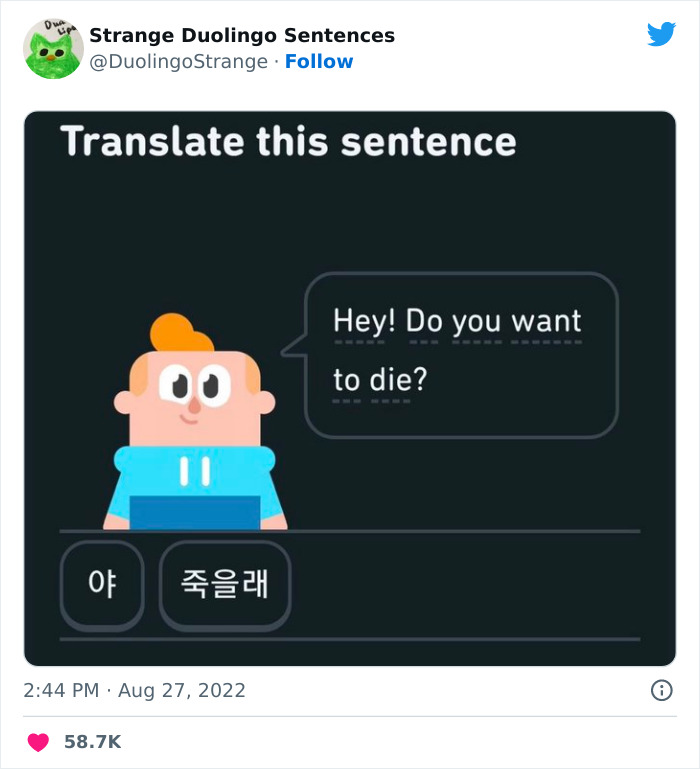
Image credits: DuolingoStrange
#6
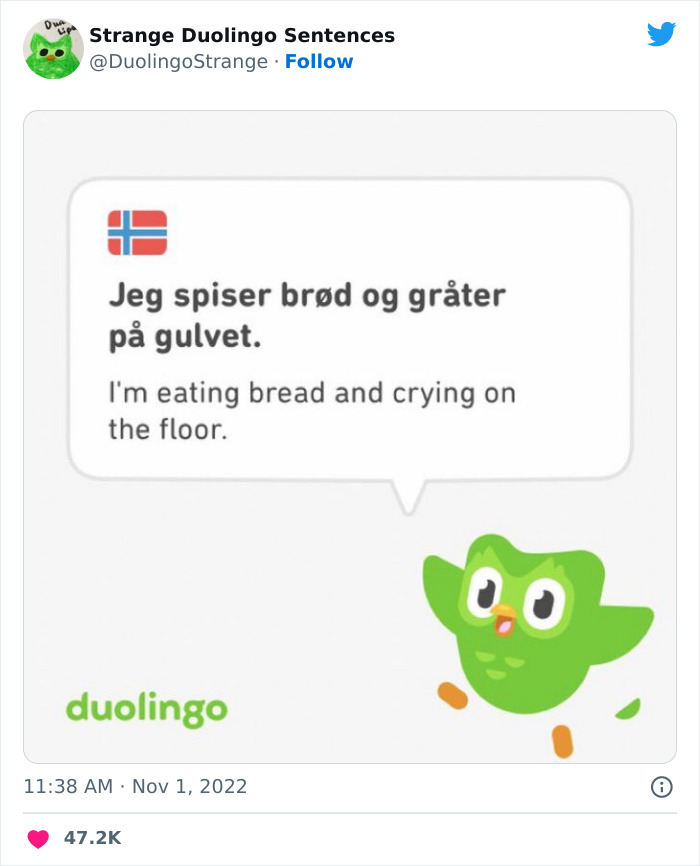
Image credits: DuolingoStrange
BP inquired about the advantages of learning a new language, to which Rachel responded: “From the neuroscience, we now know that learning a language boosts brain activity and can help keep the brain in great shape. It really is one of the best things that we can do as we get older to keep the brain active and help the brain stay healthy.”
The woman then continued: “From the communicative perspective, being able to speak one or various languages opens the doors to be able to communicate across the world. How amazing it is to be able to communicate with people from totally different cultures and different backgrounds, and to be able to open the mind to the amazing diversity that we are blessed with in this world. I’m currently coming into my seventh language, and believe me if I had more time I would want to learn more and more. I always say to people: what’s stopping you from learning another language or two or three – why not be multilingual?”
#7
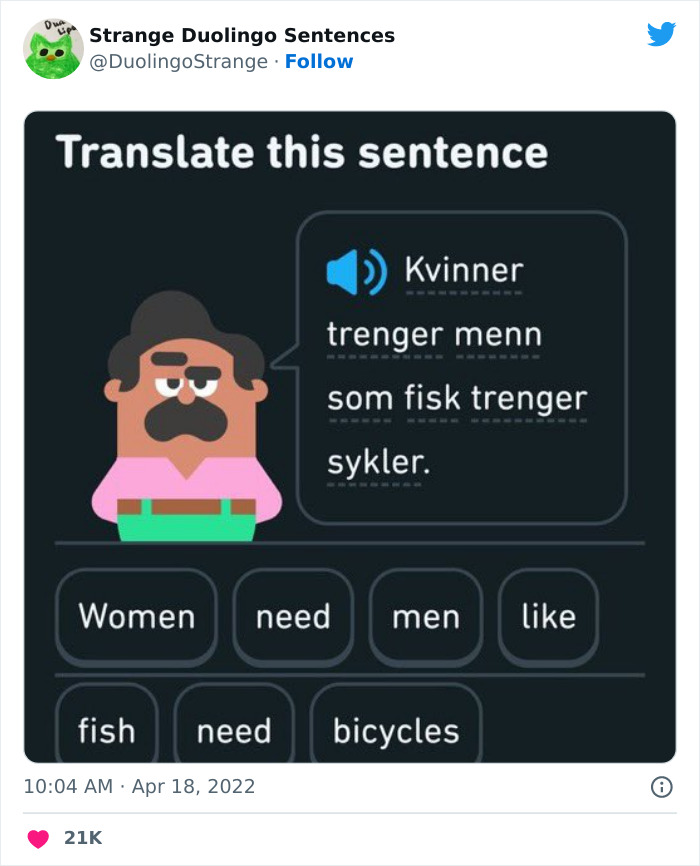
Image credits: DuolingoStrange
#8
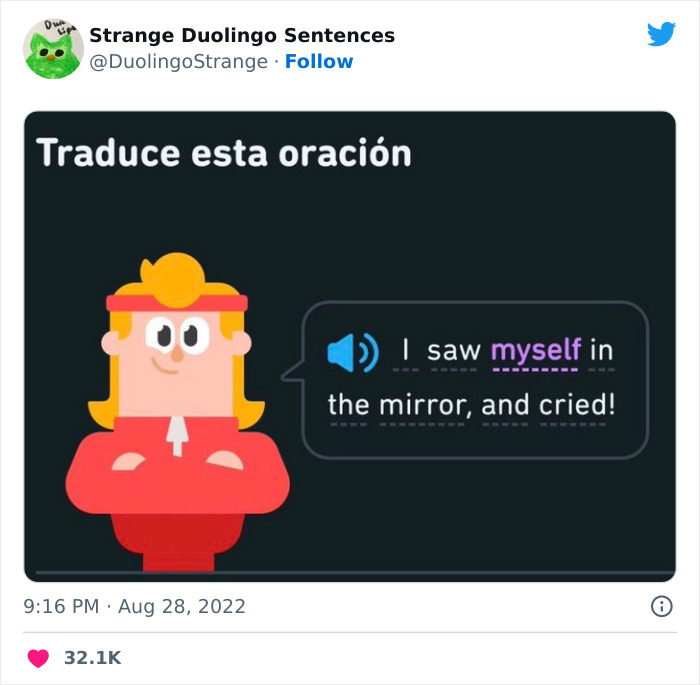
Image credits: DuolingoStrange
#9
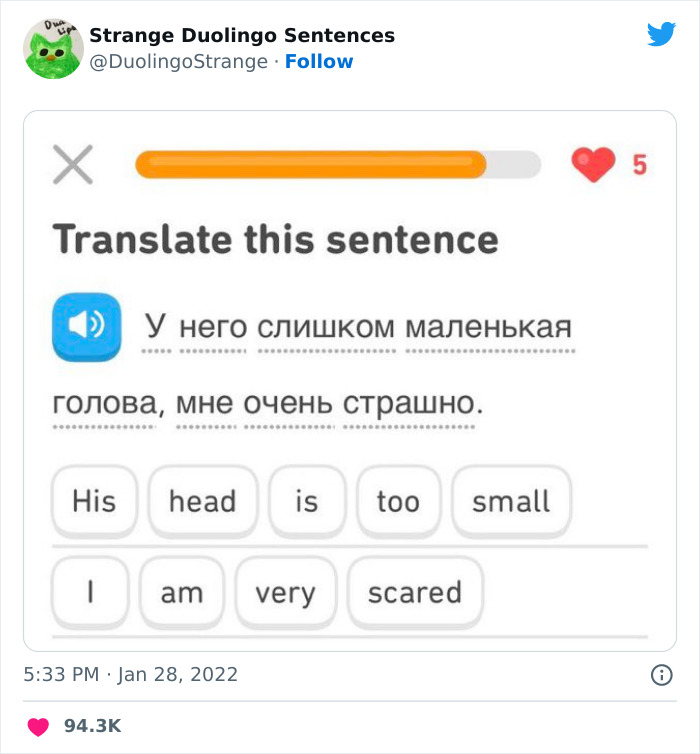
Image credits: DuolingoStrange
We then wondered what Paling thinks about language-learning apps: “Honestly, I think any tool that can help us to learn a language is a great supplement but it is only a supplement. In language learning there has to be a deeper understanding that every brain is different and we learn through conscious and subconscious input, and that ‘to learn something you have to personally be engaged.’ Apps are great for vocabulary and spaced learning, but to get to fluency levels you need much more input and practice. I would always recommend having a certified and accredited language coach, as a soundboard, facilitator, guide and language expert, who can tailor-make and personalize the learning and together discover the tools that will be useful for that learner. So yes, apps are great as added input for language learning. I also use Duolingo to increase vocab and expressions, but I know it is only potentially an eighth of the input contributing to the overall learning process.”
#10
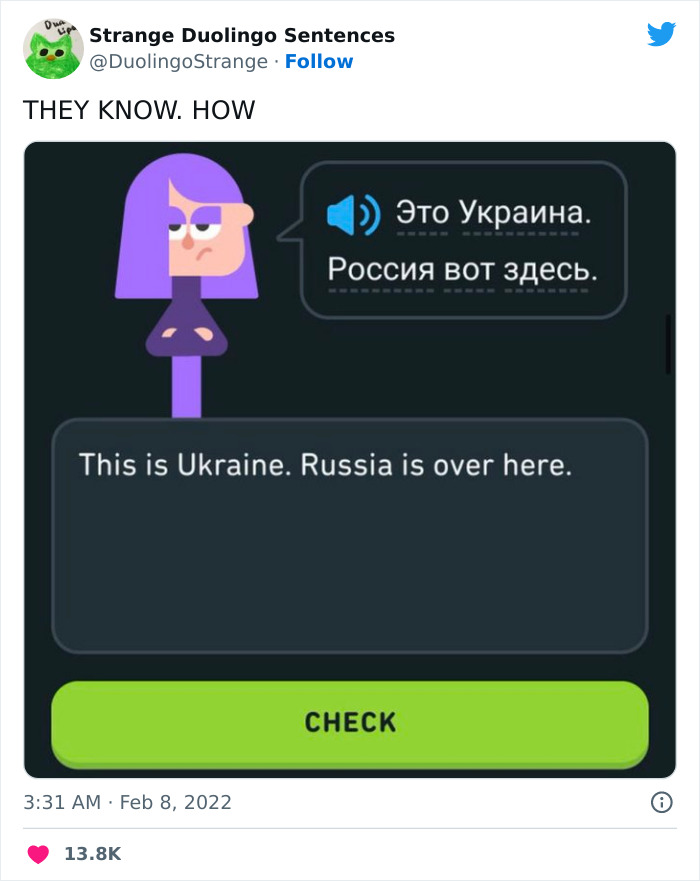
Image credits: DuolingoStrange
#11
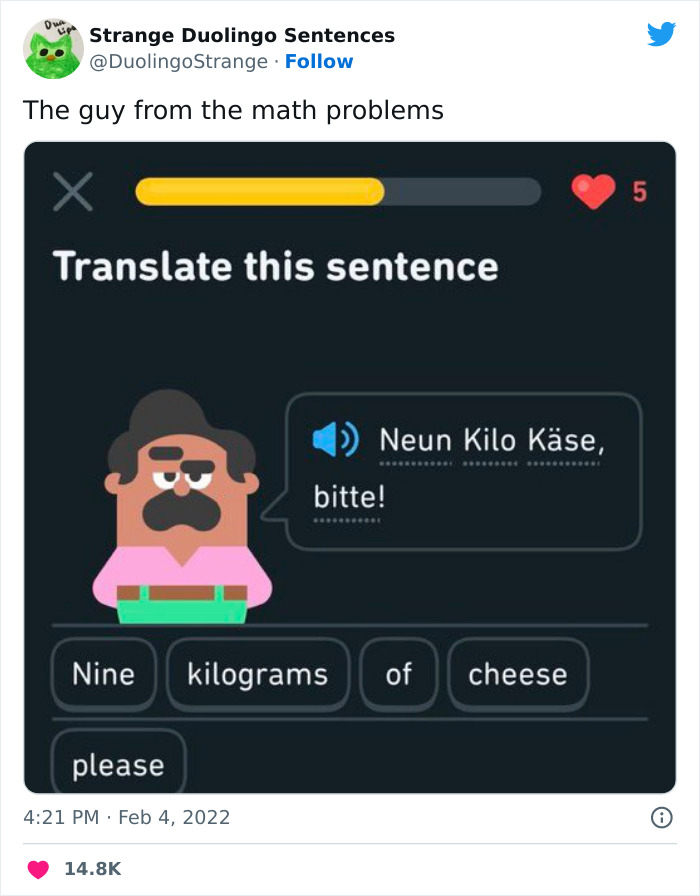
Image credits: DuolingoStrange
#12
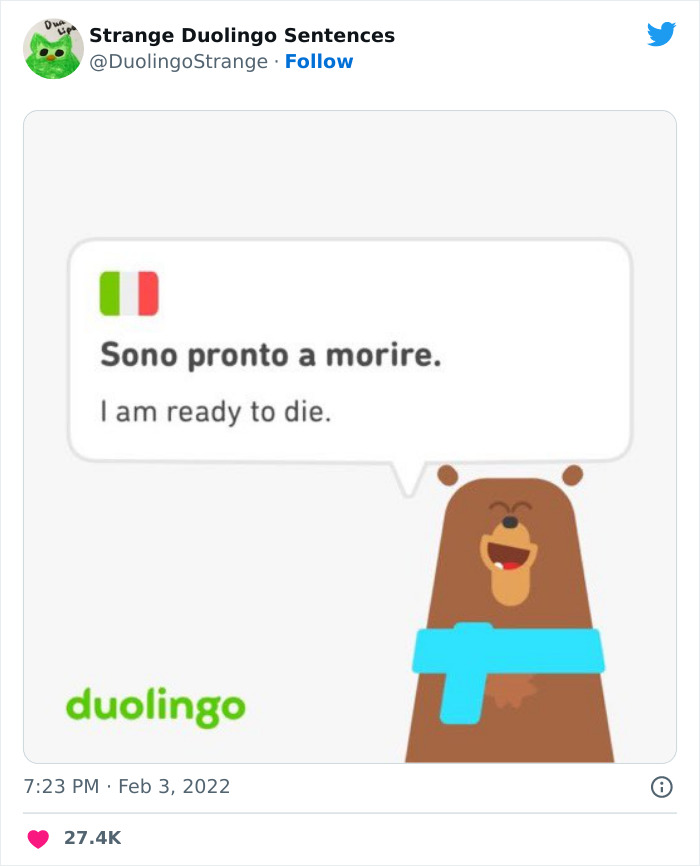
Image credits: DuolingoStrange
Lastly, the company founder added: “The experience of learning a language is enriching for heart and soul, connecting us to more and more people across the globe. How we learn languages at school is often painful and emotionally triggering, and this is something that we are adamant that we wish to change. In Neurolanguage Coaching, we focus on the holistic human and the unique individual and we marry the principles of neuroscience – how the brain functions, reacts, and learns – together with the principles and structure from the professional coaching world and incorporate these into an optimized brain-friendly language learning process. I really love the quote from Albert Einstein: ‘Education is not the learning of facts, but the training of the mind to think.’ This really represents everything that we stand for.”
We hope you’ve enjoyed this comical ensemble of silly, fun, and sometimes alarming translation prompts. Which one is your favorite? Let us know!
#13
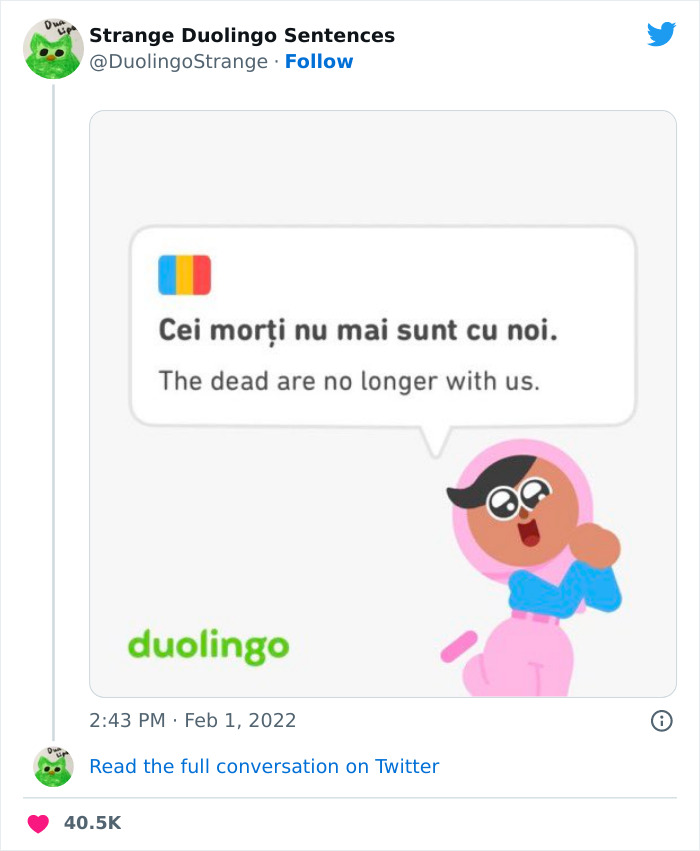
Image credits: DuolingoStrange
#14
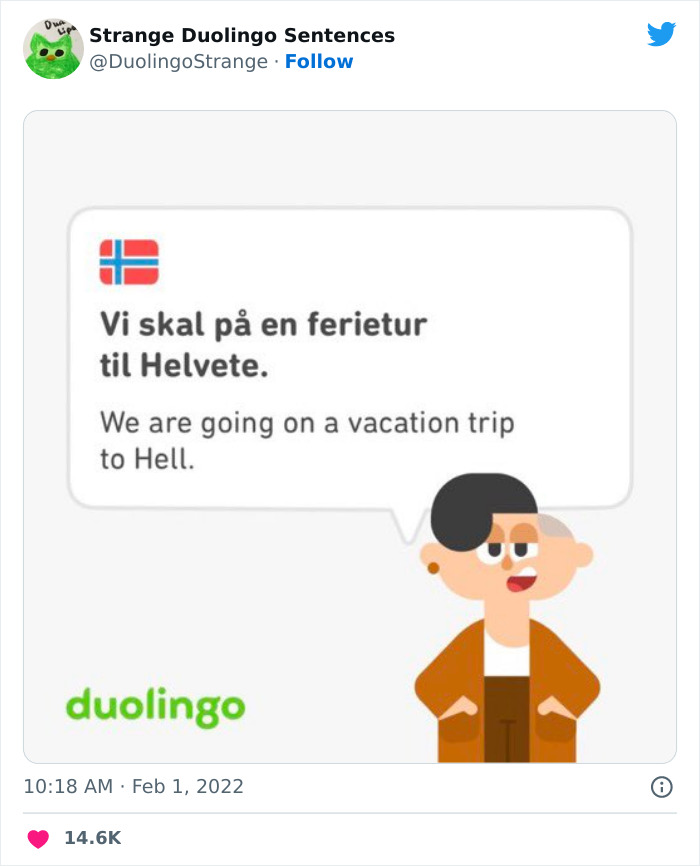
Image credits: DuolingoStrange
#15
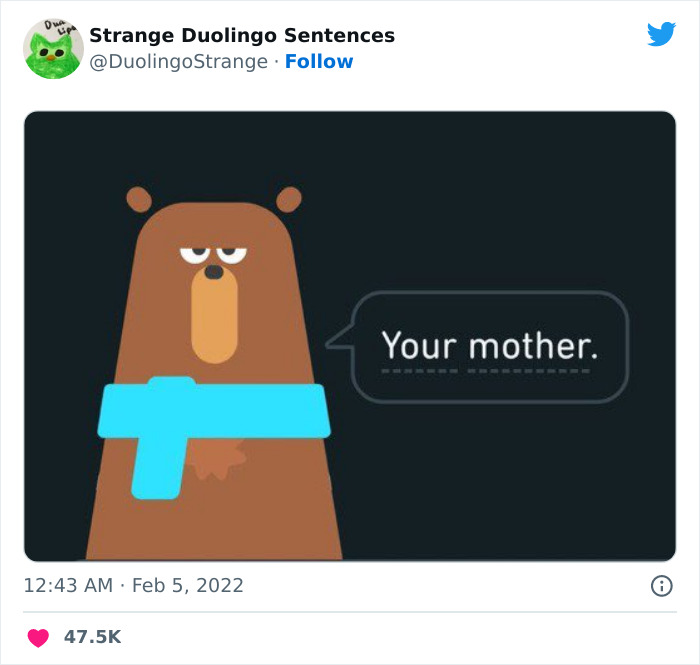
Image credits: DuolingoStrange
#16
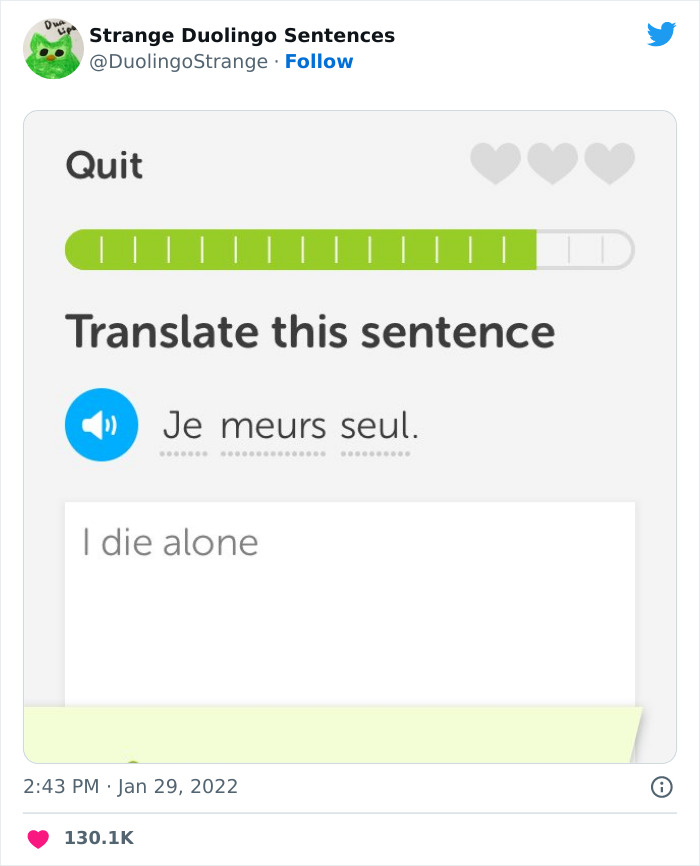
Image credits: DuolingoStrange
#17
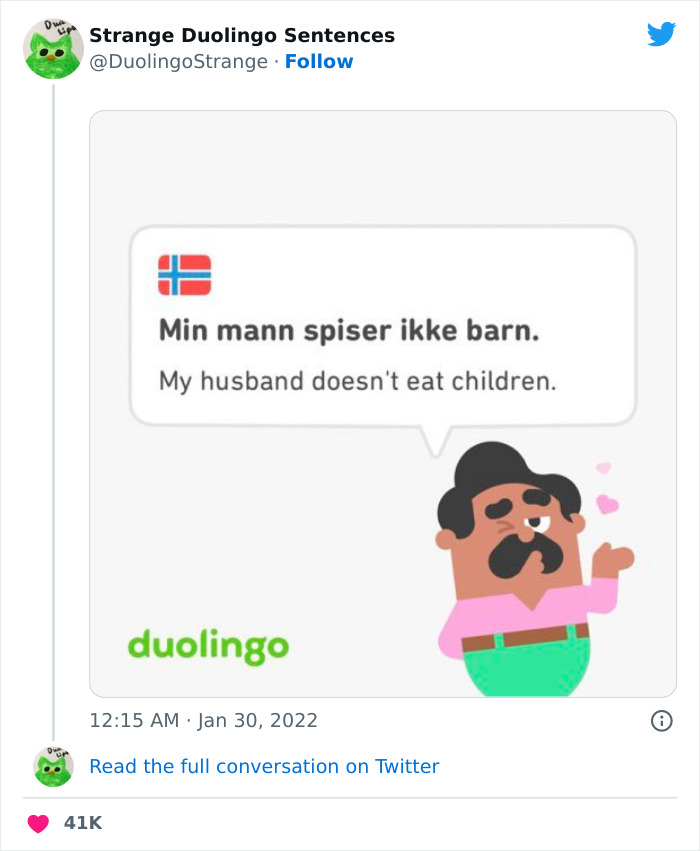
Image credits: DuolingoStrange
#18
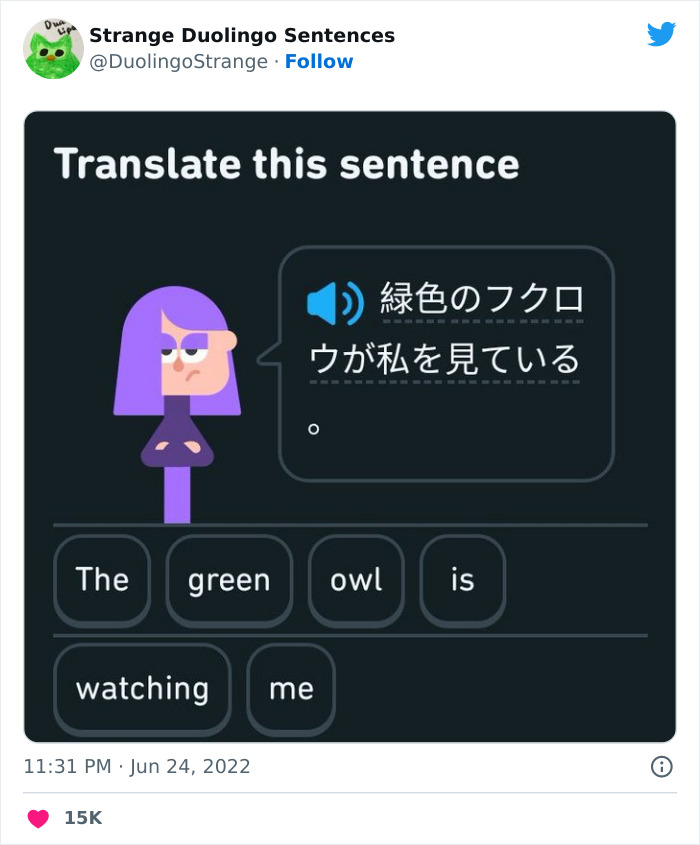
Image credits: DuolingoStrange
#19
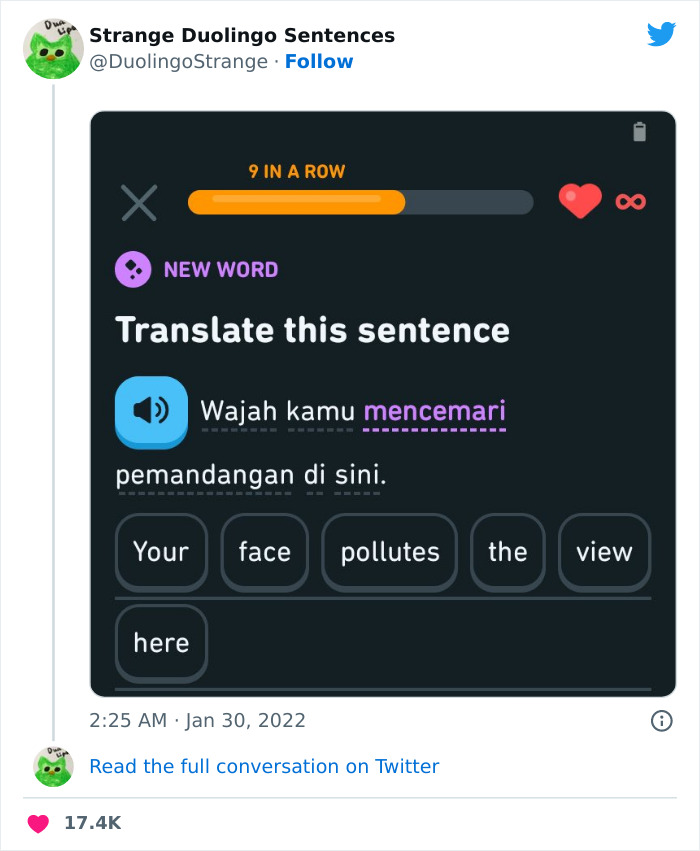
Image credits: DuolingoStrange
#20
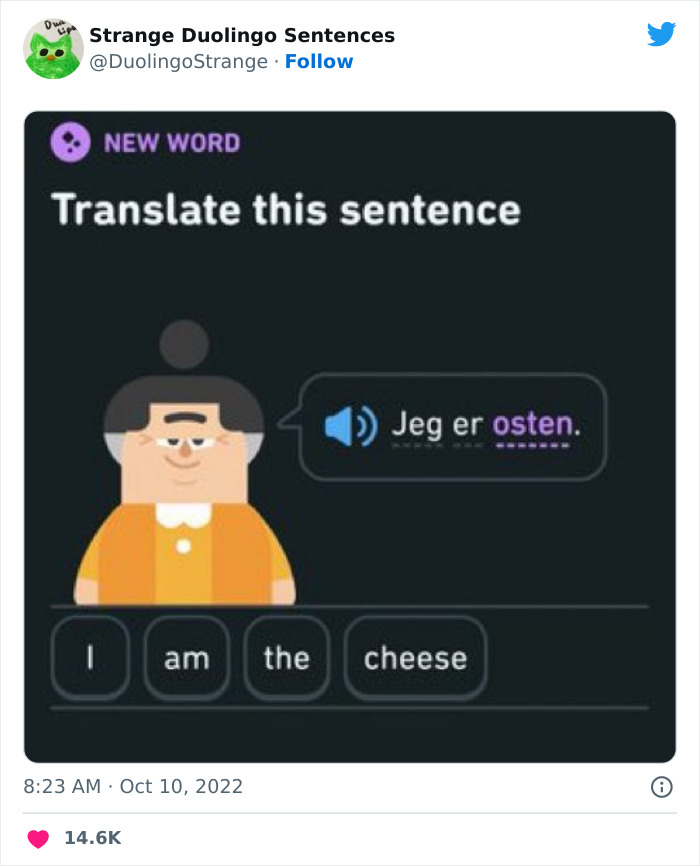
Image credits: DuolingoStrange
#21
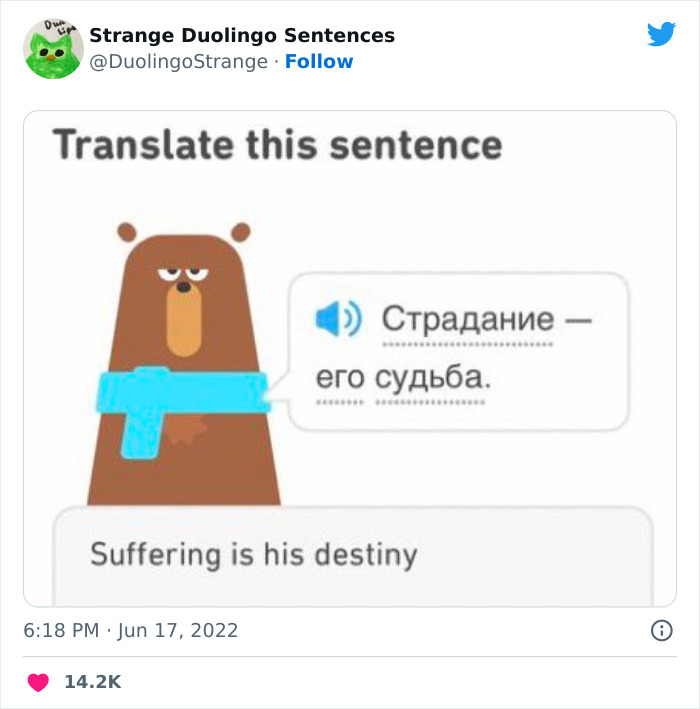
Image credits: DuolingoStrange
#22
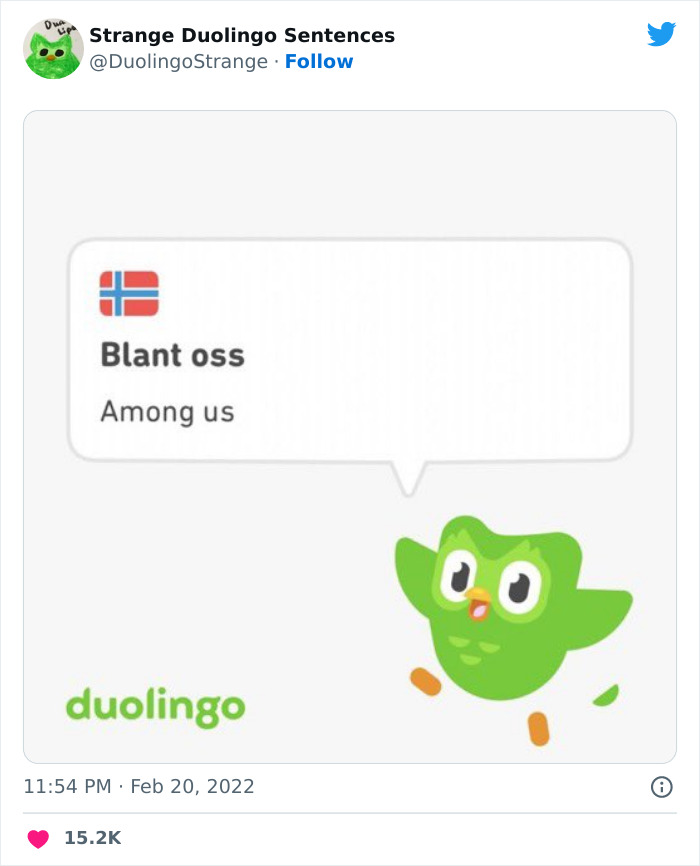
Image credits: DuolingoStrange
#23
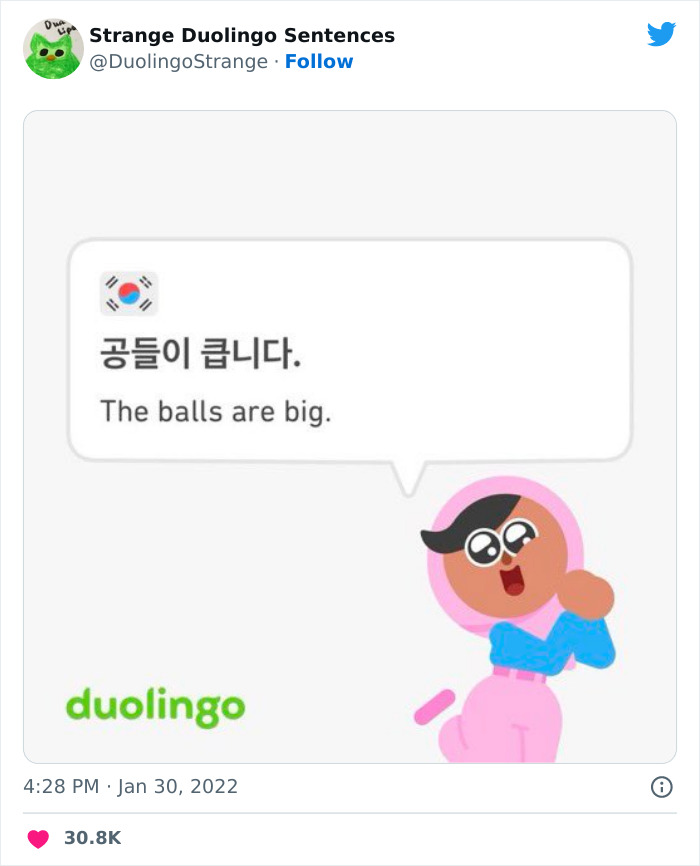
Image credits: DuolingoStrange
#24
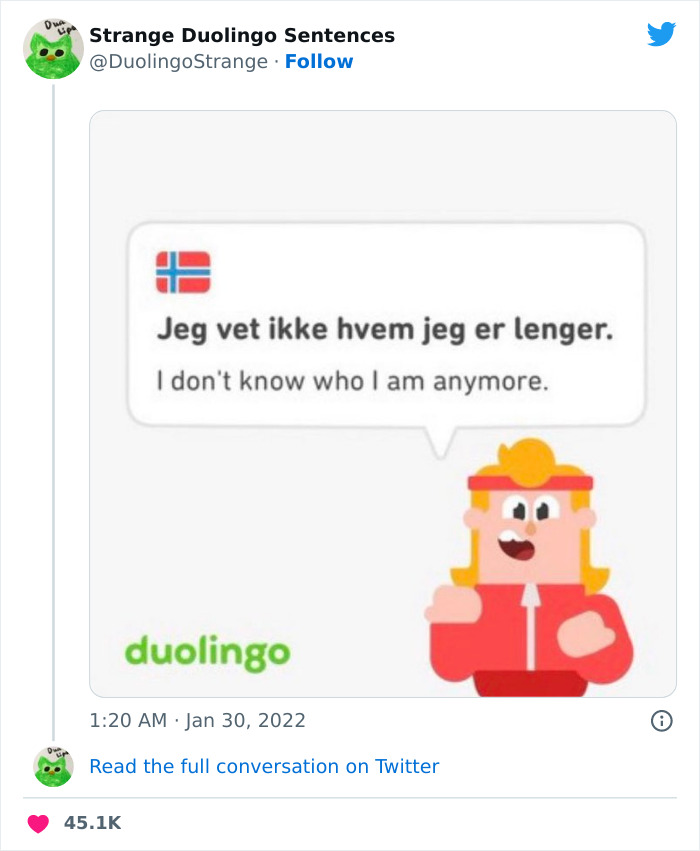
Image credits: DuolingoStrange
#25
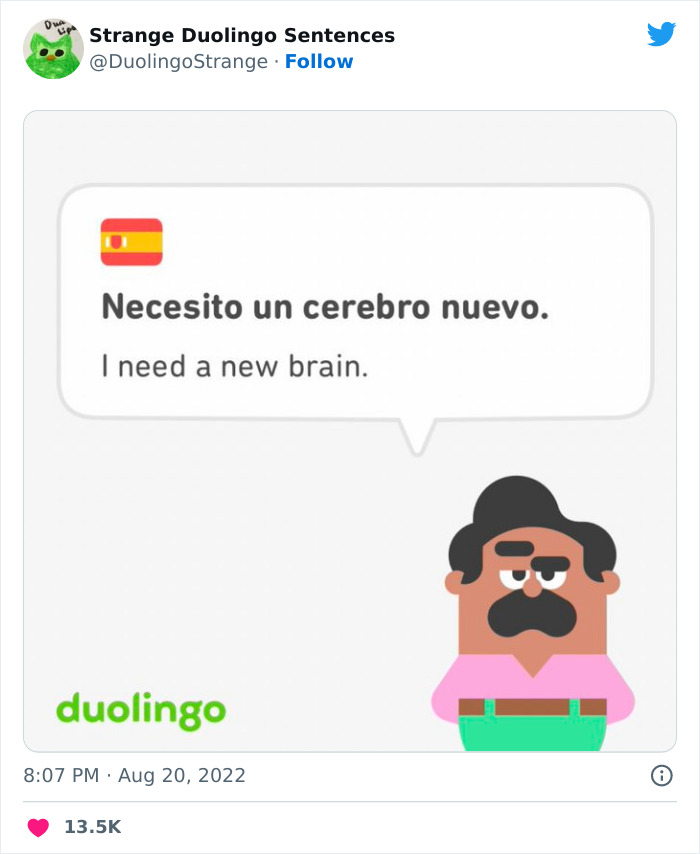
Image credits: DuolingoStrange
#26
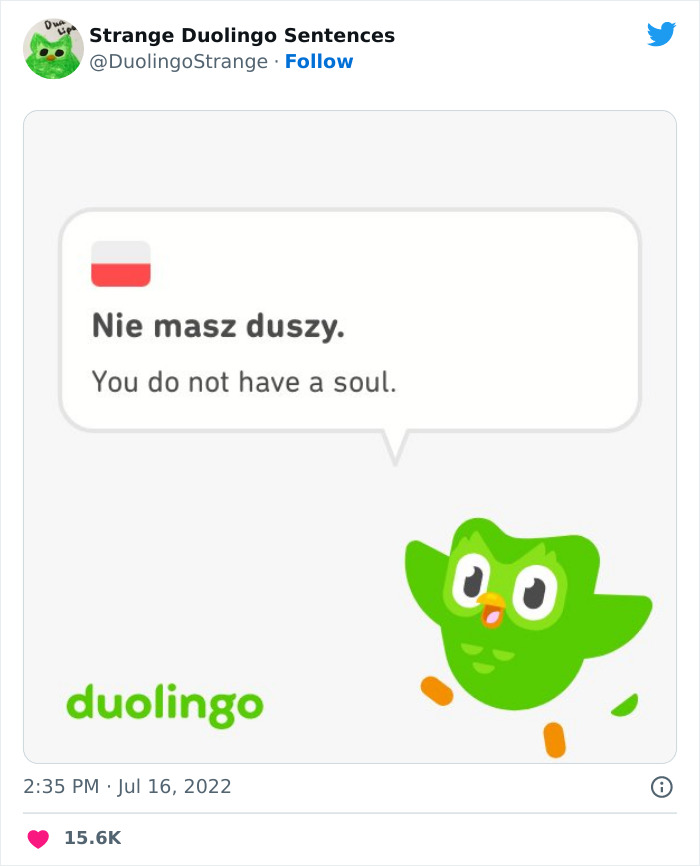
Image credits: DuolingoStrange
#27
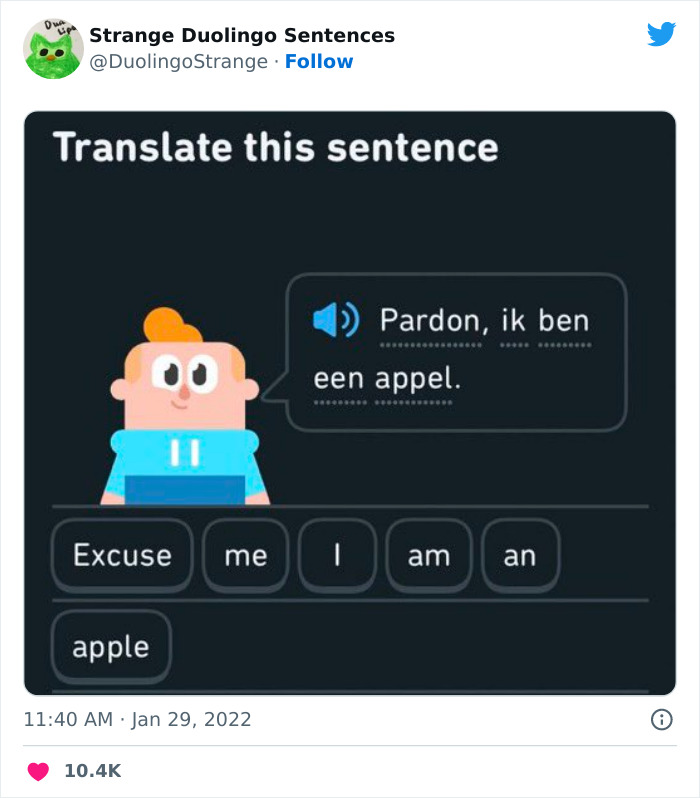
Image credits: DuolingoStrange
#28
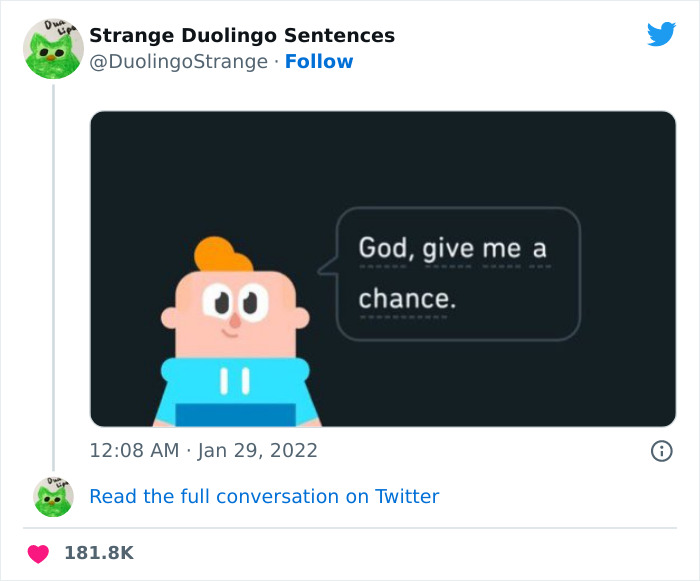
Image credits: DuolingoStrange
#29
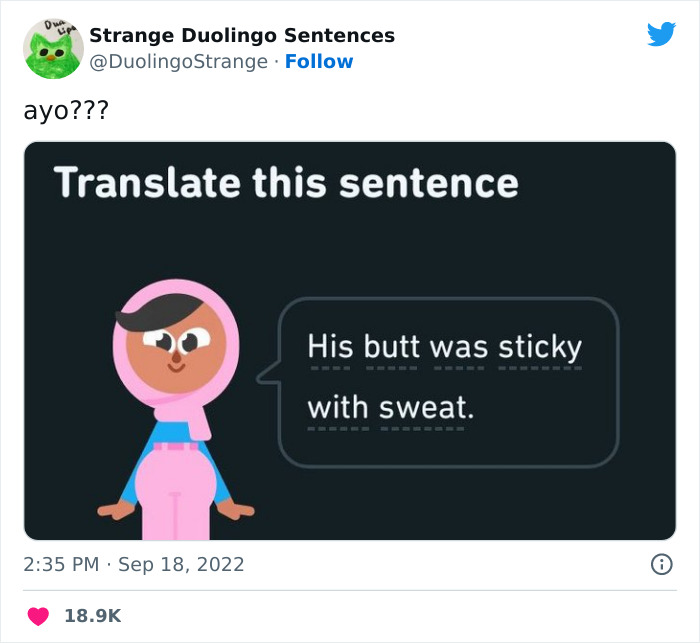
Image credits: DuolingoStrange
#30
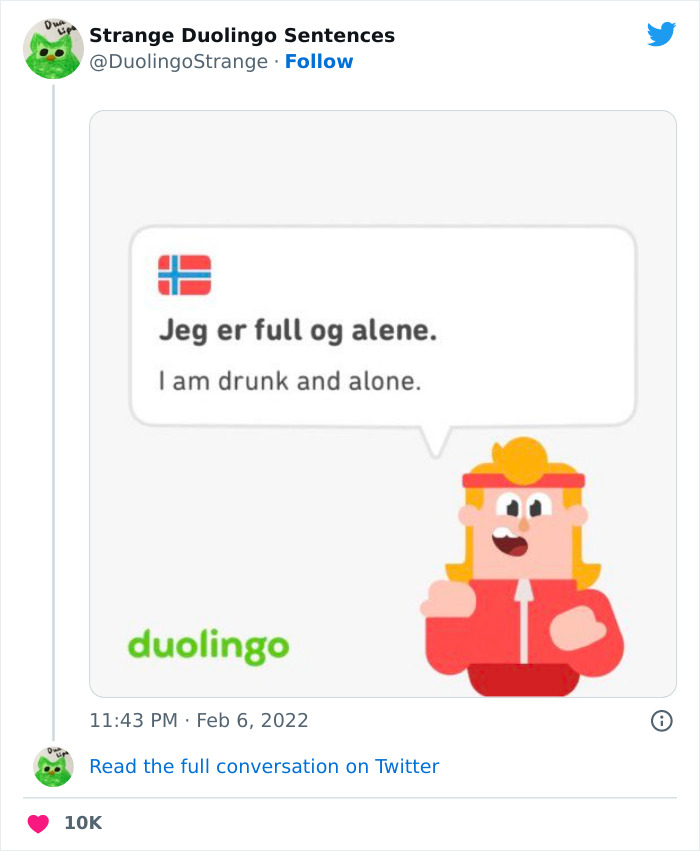
Image credits: DuolingoStrange
#31
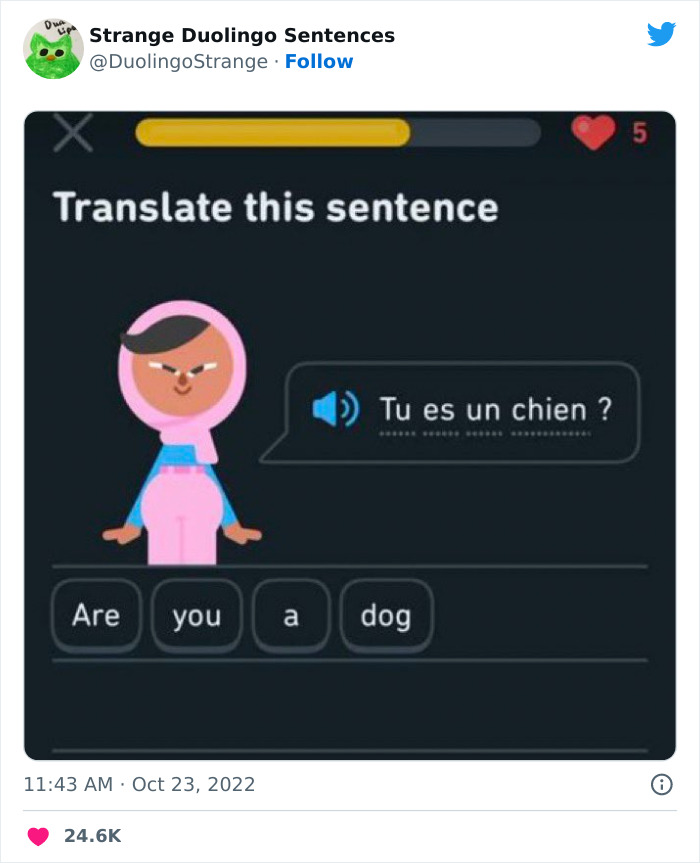
Image credits: DuolingoStrange
#32
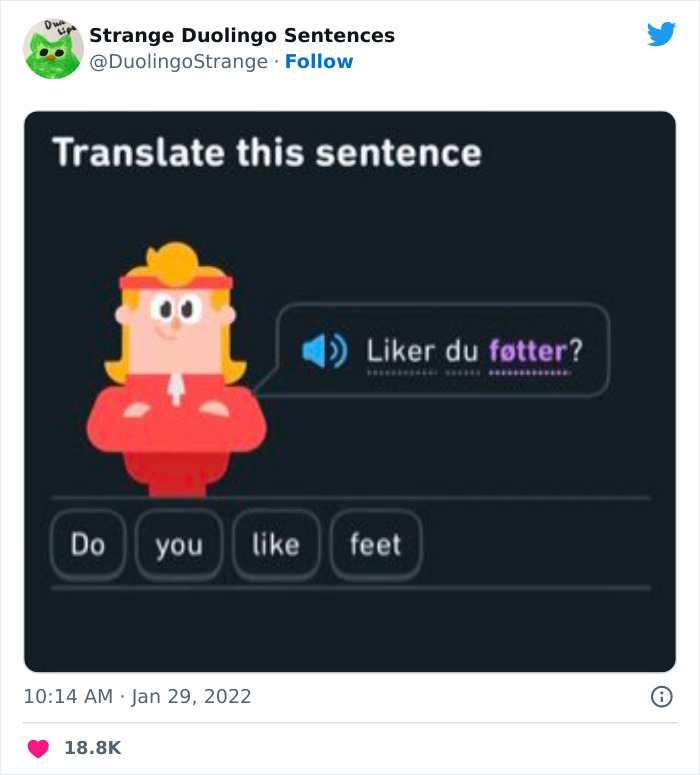
Image credits: DuolingoStrange
#33
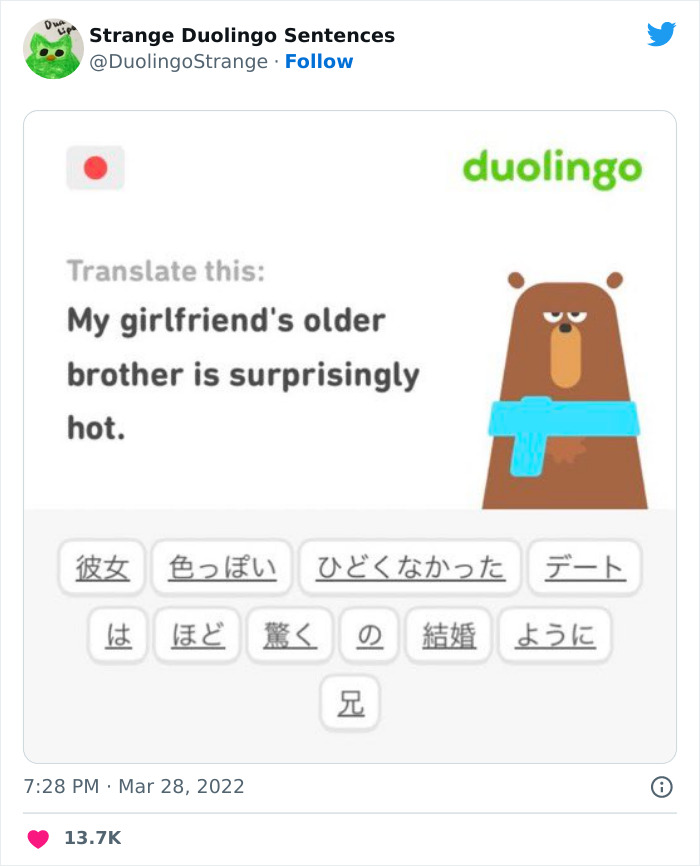
Image credits: DuolingoStrange
#34
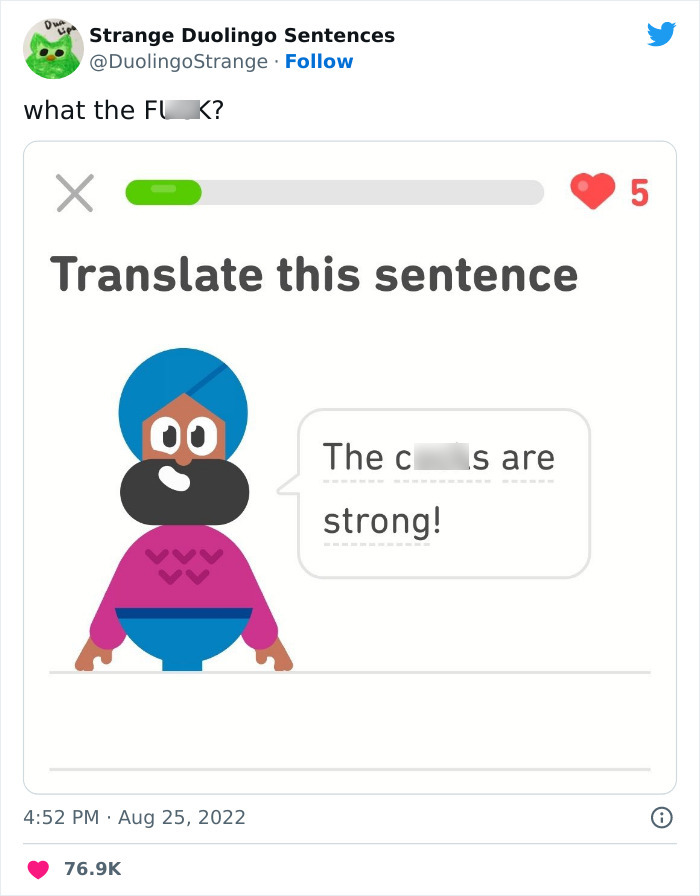
Image credits: DuolingoStrange
#35
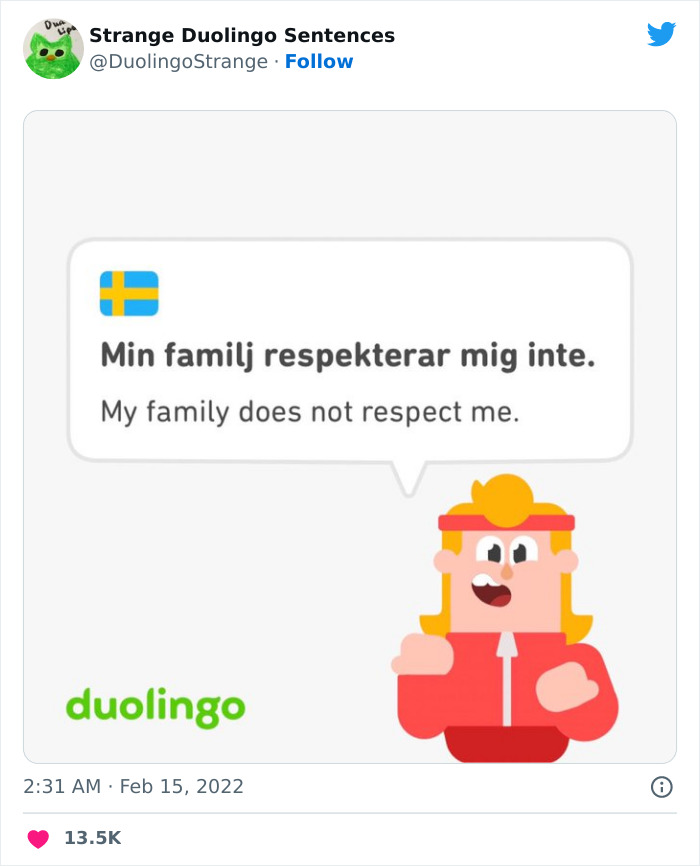
Image credits: DuolingoStrange
#36
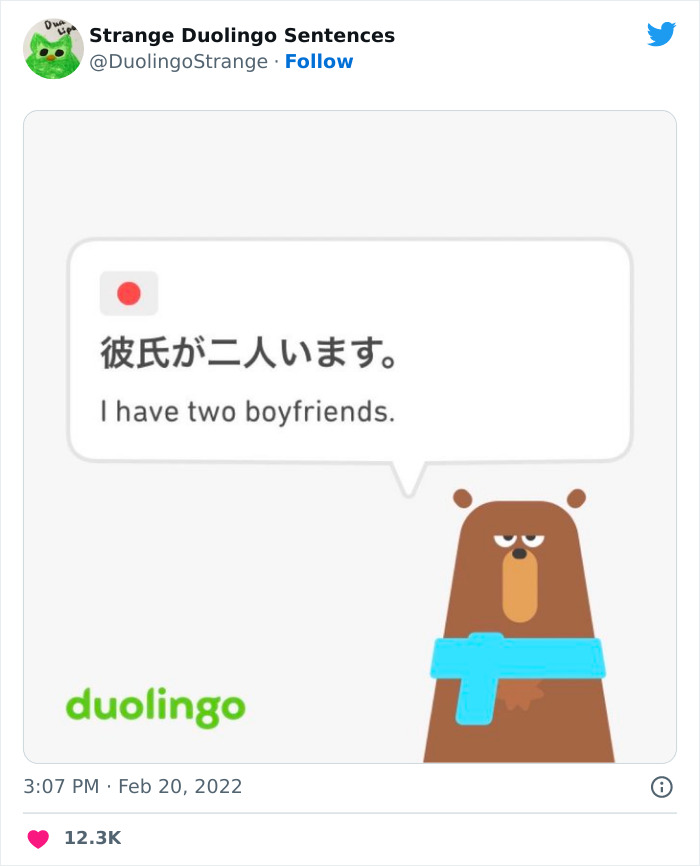
Image credits: DuolingoStrange
#37
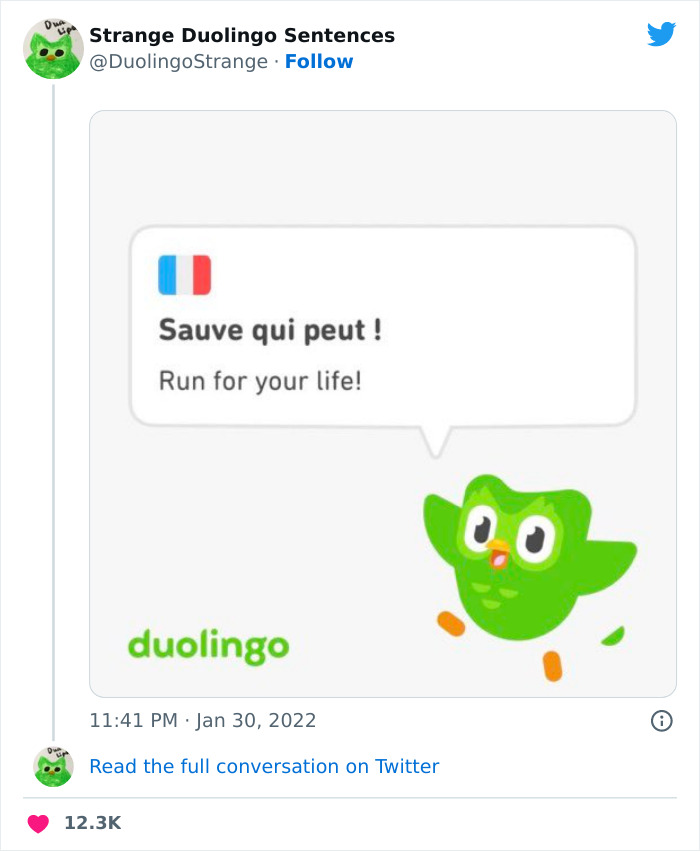
Image credits: DuolingoStrange
#38
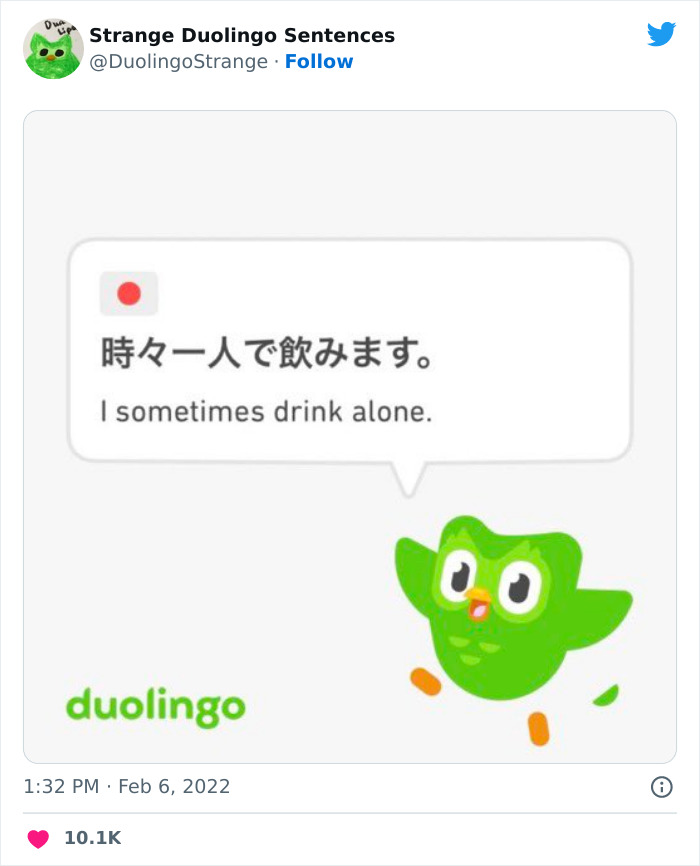
Image credits: DuolingoStrange
#39
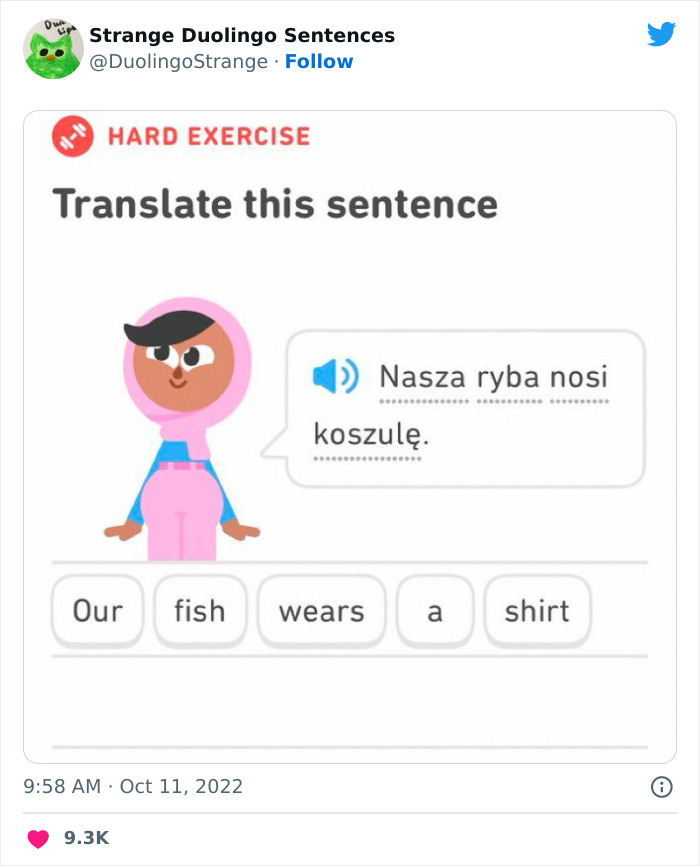
Image credits: DuolingoStrange
#40
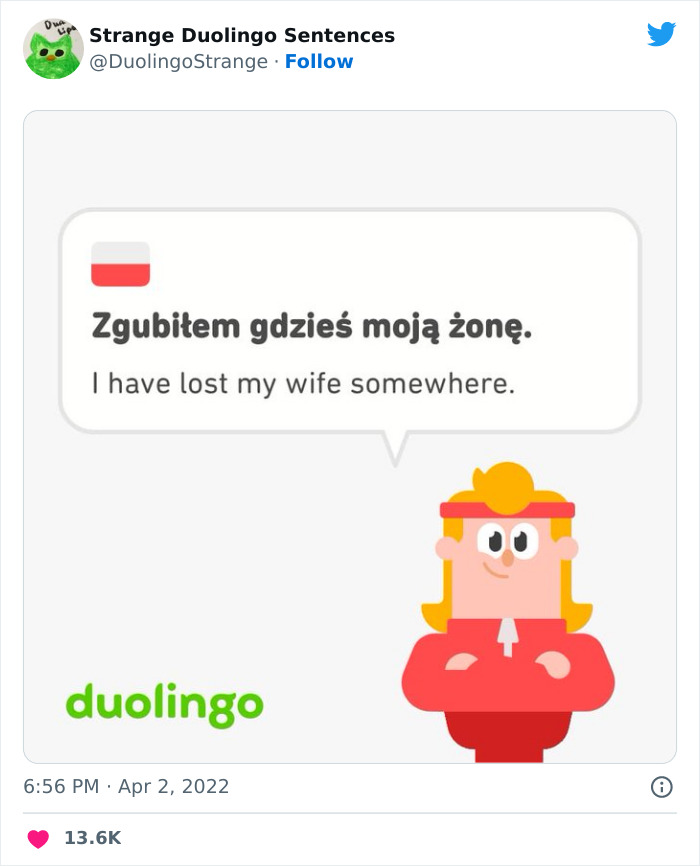
Image credits: DuolingoStrange
#41
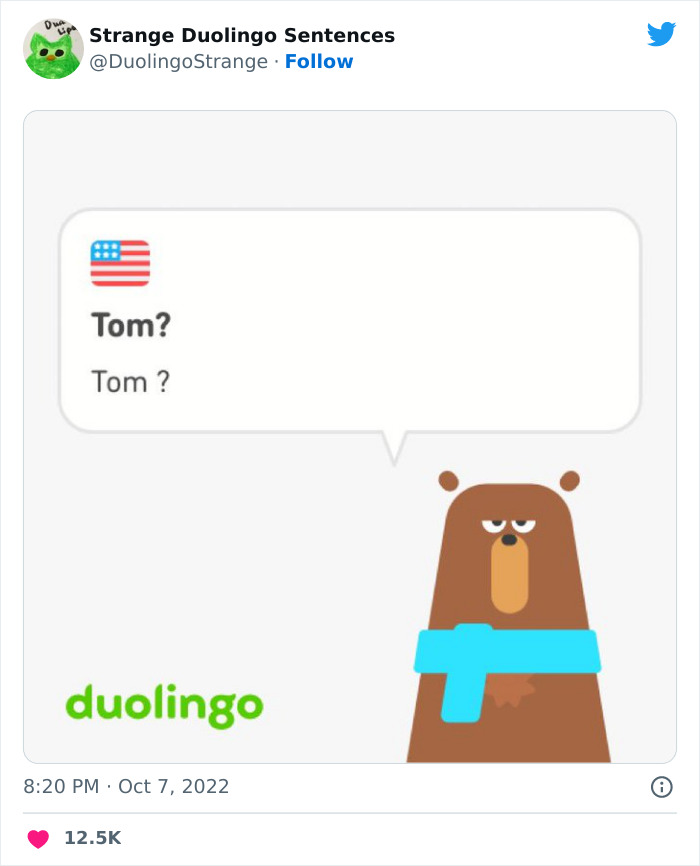
Image credits: DuolingoStrange
#42
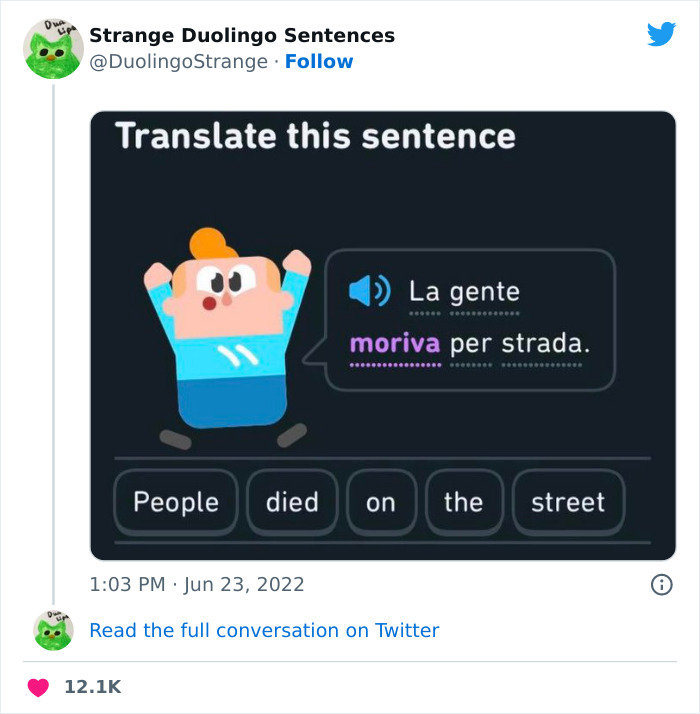
Image credits: DuolingoStrange
#43
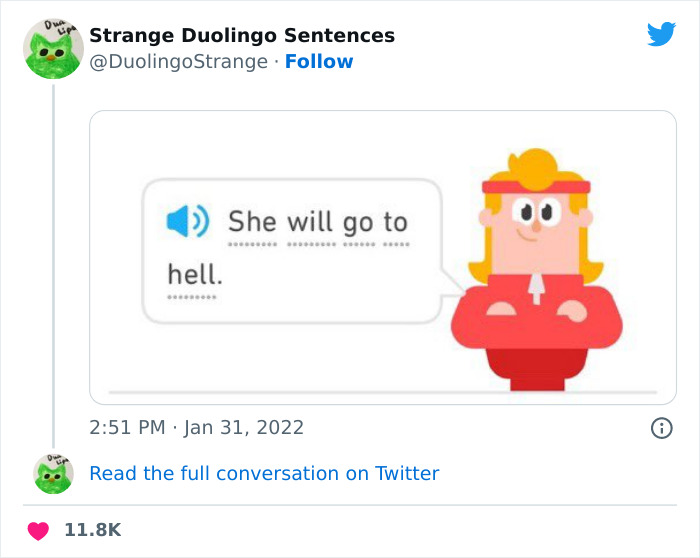
Image credits: DuolingoStrange
#44

Image credits: DuolingoStrange
#45
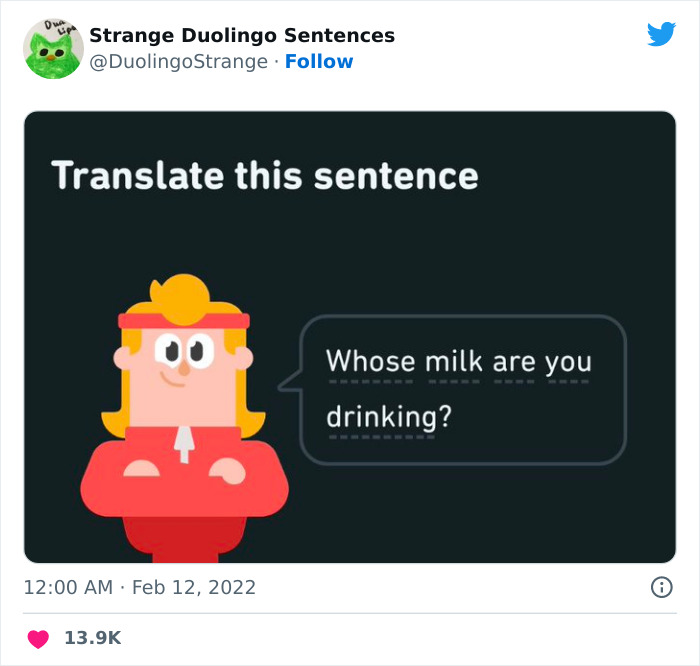
Image credits: DuolingoStrange
#46
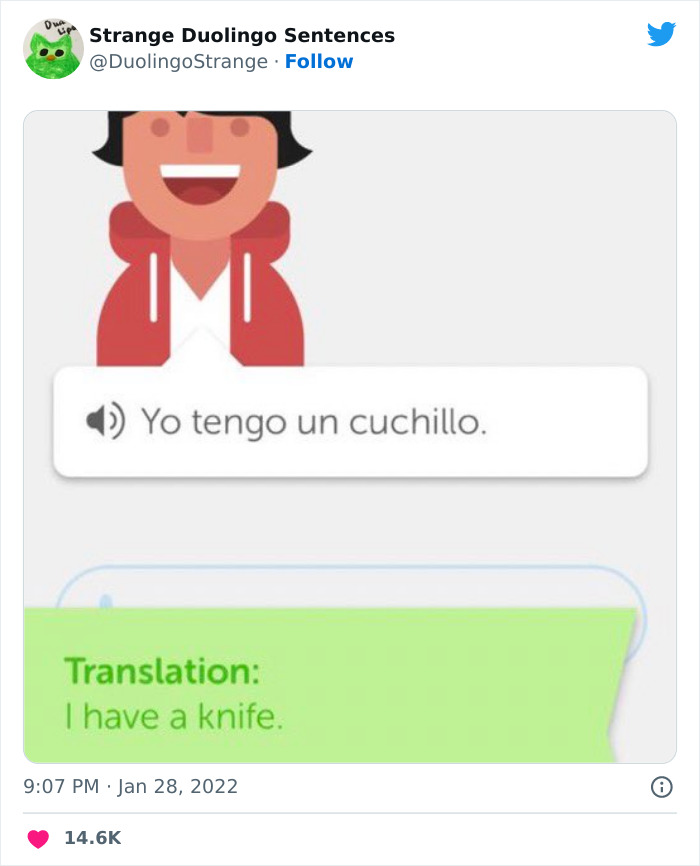
Image credits: DuolingoStrange
#47
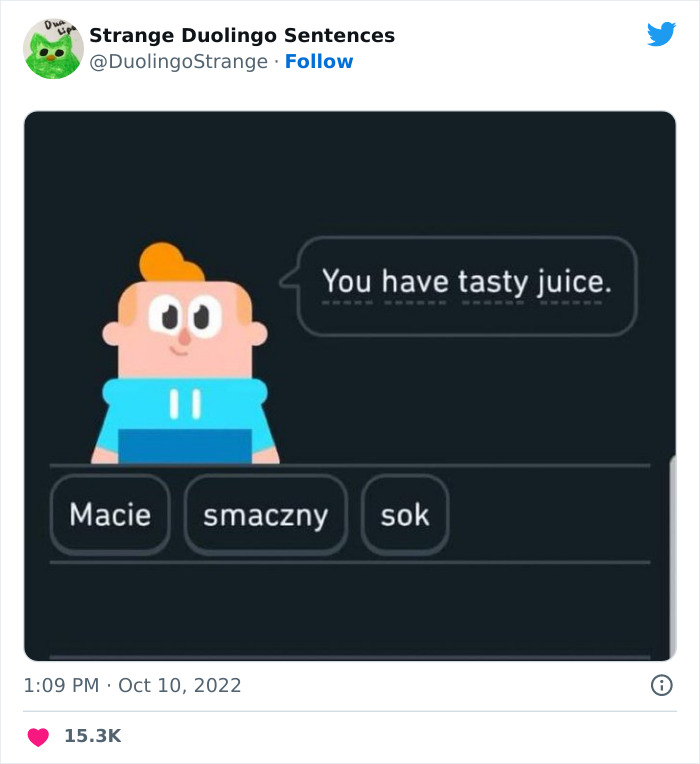
Image credits: DuolingoStrange
#48
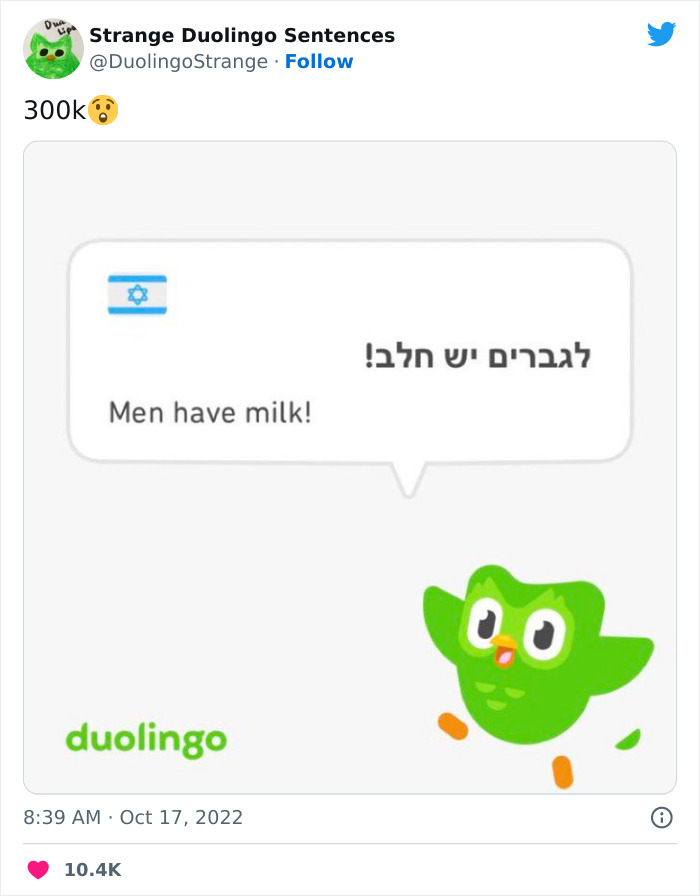
Image credits: DuolingoStrange
#49
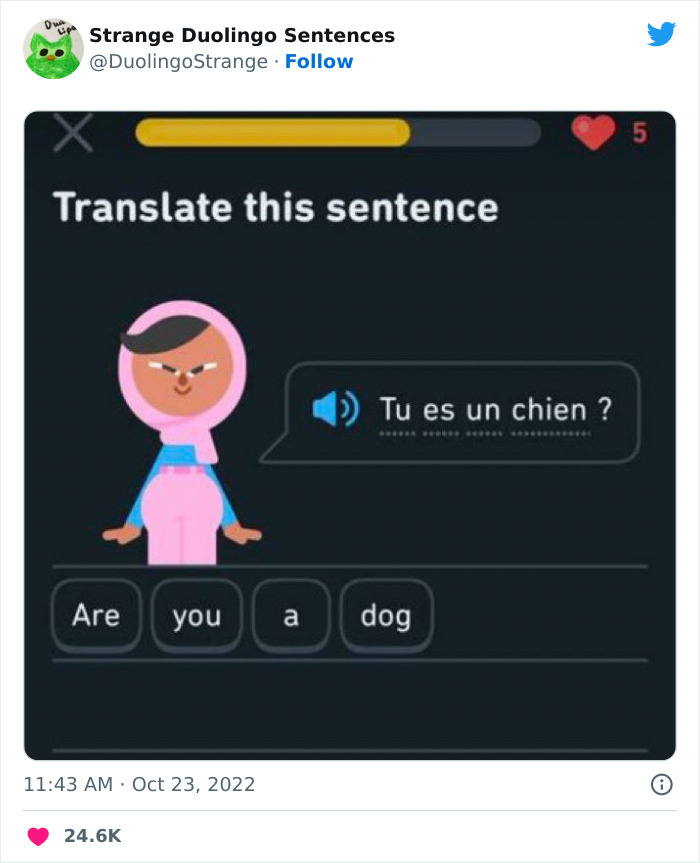
Image credits: DuolingoStrange
from Bored Panda https://bit.ly/3X9MxHG
via Boredpanda
